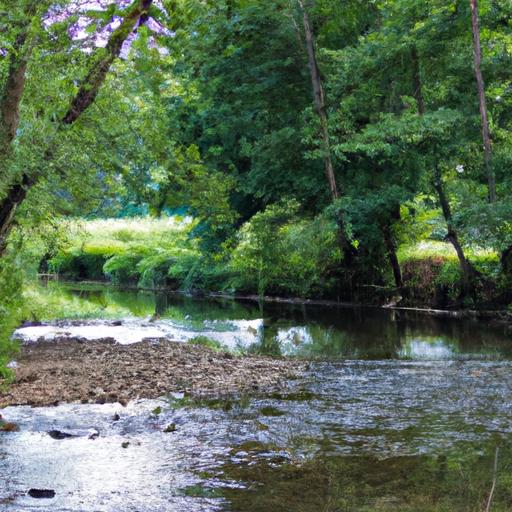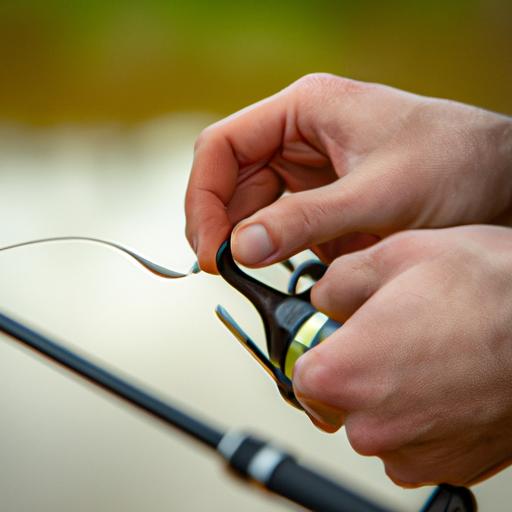Leisure recreation and tourism are often used interchangeably, but they encompass distinct concepts that are worth exploring individually. Understanding the difference between these terms is crucial for both individuals seeking leisure activities and those involved in the tourism industry. In this article, we will dive into the definitions of leisure recreation and tourism, highlighting the importance of recognizing their disparities.
Leisure recreation refers to activities pursued during free time for enjoyment, relaxation, and personal fulfillment. It includes a wide range of activities such as hobbies, sports, arts and crafts, and other forms of entertainment. The primary purpose of leisure recreation is self-enjoyment and personal growth. Engaging in leisure activities allows individuals to unwind, recharge, and explore their passions.
On the other hand, tourism involves traveling to different destinations for recreational, cultural, or business purposes. It encompasses a broader concept, encompassing activities, experiences, and services associated with travel. Tourism can be categorized into various types, including international tourism (traveling to different countries), domestic tourism (traveling within one’s own country), and even niche tourism such as eco-tourism or adventure tourism.
Understanding the dissimilarities between leisure recreation and tourism is essential. While leisure recreation focuses on personal enjoyment and growth, tourism involves exploring new places, immersing oneself in different cultures, and often requires extensive planning and logistics. The motivations and purposes behind these activities differ significantly.
Recognizing the difference between leisure recreation and tourism also sheds light on the duration and location of these activities. Leisure recreation can be enjoyed in one’s own backyard or local community, providing immediate access to relaxation and enjoyment. On the other hand, tourism often involves visiting new locations, requiring travel and accommodation arrangements. The duration of leisure recreation may vary from a few hours to an entire day, while tourism often implies longer stays, ranging from a weekend getaway to extended vacations.
In addition, commercial aspects play a significant role in distinguishing leisure recreation from tourism. While leisure activities can be pursued individually or with minimal costs, tourism often entails financial investments. Booking flights, accommodation, transportation, and engaging in various tourist attractions usually involve expenses. The tourism industry encompasses a wide range of businesses, including hotels, tour operators, travel agencies, and restaurants, all catering to the needs of travelers.
Understanding the difference between leisure recreation and tourism is crucial for individuals seeking specific experiences and for stakeholders in the tourism industry. By recognizing the distinctions, individuals can effectively plan and choose activities that align with their desires and expectations. Likewise, businesses in the tourism sector can tailor their offerings to meet the unique needs and preferences of travelers.
In the following sections, we will delve deeper into the characteristics and key differences between leisure recreation and tourism, providing real-life examples and illustrations to solidify our understanding. So, let’s embark on this journey together to unravel the intricacies that set leisure recreation and tourism apart.
Understanding Leisure Recreation
Leisure recreation is a term that encompasses activities pursued during free time for enjoyment, relaxation, and personal fulfillment. It is a vital aspect of our lives that allows us to escape the daily grind and engage in activities that bring us joy and satisfaction. Let’s explore this concept further by delving into its definition, the different activities involved, and the purpose and benefits of engaging in leisure recreation.
Definition of Leisure Recreation
Leisure recreation refers to the various activities individuals pursue during their leisure time. It encompasses a wide range of interests and hobbies, including but not limited to sports, arts and crafts, gardening, reading, cooking, and socializing with friends and family. The essence of leisure recreation lies in its voluntary nature and the absence of external obligations or constraints.
Activities Involved in Leisure Recreation
Engaging in leisure recreation involves a diverse array of activities that cater to different interests and preferences. Some individuals find solace in physical activities such as playing sports, hiking, or cycling, while others may prefer more introspective pursuits like painting, writing, or playing musical instruments. Additionally, leisure recreation can include activities that promote personal growth and well-being, such as yoga, meditation, and mindfulness practices.
Purpose and Benefits of Engaging in Leisure Recreation
The purpose of engaging in leisure recreation is to find joy, relaxation, and personal fulfillment. It serves as a means to escape from the pressures of everyday life, allowing individuals to recharge their batteries and rejuvenate their minds and bodies. Leisure recreation offers an opportunity for self-expression, creativity, and exploration of personal interests.
Moreover, there are numerous benefits associated with engaging in leisure recreation. It helps reduce stress levels, improves mental health, enhances physical well-being, and fosters a sense of accomplishment and self-confidence. Through leisure activities, individuals can develop new skills, build social connections, and broaden their horizons. It promotes a balanced lifestyle and contributes to overall happiness and life satisfaction.
In the next section, we will delve into the concept of tourism, exploring its definition, various types, and the components that make up the tourism industry. So, let’s continue our exploration and unravel the fascinating world of tourism.
Key Differences between Leisure Recreation and Tourism
Leisure recreation and tourism may seem similar on the surface, but they possess distinct characteristics that set them apart. Understanding these key differences is crucial for individuals seeking specific experiences and for stakeholders in the tourism industry. Let’s explore the disparities in more detail:
Nature of Activities
Leisure recreation encompasses a wide range of activities pursued during free time for personal enjoyment and growth. These activities can include hobbies, sports, arts and crafts, reading, and various forms of entertainment. The focus is on individual preferences and interests, allowing individuals to engage in activities that bring them joy and fulfillment.
In contrast, tourism involves activities associated with traveling to different destinations. These activities include sightseeing, cultural experiences, exploring historical landmarks, and participating in local attractions. Tourism often involves immersing oneself in the local culture, trying new cuisines, and engaging in activities specific to the destination.
Purpose and Motivation
The purpose and motivation behind leisure recreation and tourism also differ significantly. Leisure recreation is primarily pursued for personal enjoyment, relaxation, and self-fulfillment. Individuals engage in leisure activities to unwind, recharge, and explore their passions. The main motivation is intrinsic, driven by personal interests and desires.
On the other hand, tourism is motivated by a desire to explore new locations, cultures, and experiences. People engage in tourism to broaden their horizons, create lasting memories, and learn about different parts of the world. The purpose is often extrinsic, driven by the curiosity to discover and immerse oneself in diverse environments.
Duration and Location
Another key difference lies in the duration and location of leisure recreation and tourism activities. Leisure recreation can be enjoyed in one’s own community or backyard, allowing for immediate access to relaxation and enjoyment. The duration of leisure activities can vary, ranging from a few hours to an entire day, depending on the individual’s preferences and available time.
In contrast, tourism involves traveling to different locations, often requiring extensive planning and logistics. Tourism activities generally span longer durations, ranging from a weekend getaway to extended vacations. The location of tourism activities is typically outside one’s immediate surroundings, offering a change of scenery and exposure to new environments.
Involvement of Commercial Aspects
Commercial aspects play a significant role in differentiating leisure recreation from tourism. While leisure activities can be pursued individually or with minimal costs, tourism often entails financial investments. Booking flights, accommodation, transportation, and engaging in various tourist attractions usually involve expenses.
Moreover, the tourism industry comprises a wide range of businesses, including hotels, tour operators, travel agencies, and restaurants. These commercial entities cater to the needs and preferences of travelers, providing services and experiences tailored to enhance the tourism experience.
Understanding these key differences between leisure recreation and tourism is essential for individuals seeking specific experiences and for businesses in the tourism industry. By recognizing these disparities, individuals can make informed decisions about how they choose to spend their leisure time, while stakeholders in the tourism sector can better cater to the unique needs and expectations of travelers.
Examples and Illustrations
Real-Life Scenarios Showcasing Leisure Recreation
-
Hiking and Nature Exploration: Imagine spending a sunny weekend exploring a nearby hiking trail. You pack your backpack with essentials, lace up your hiking boots, and embark on a journey surrounded by lush greenery, breathtaking vistas, and the soothing sounds of nature. This leisure recreation activity allows you to connect with the outdoors, improve your physical fitness, and enjoy moments of solitude or companionship with fellow nature enthusiasts.
-
Artistic Pursuits: Let’s picture a scenario where you immerse yourself in a painting class. You unleash your creativity, brush in hand, as you create a masterpiece on canvas. Engaging in artistic activities like painting, drawing, or pottery not only provides a means of self-expression but also helps reduce stress, enhance cognitive skills, and foster a sense of accomplishment.
Real-Life Scenarios Showcasing Tourism
-
Exploring Historical Landmarks: Picture yourself wandering the winding streets of an ancient city, marveling at the architectural wonders that stand as testaments to a bygone era. Tourism allows you to immerse yourself in the rich history and culture of different destinations. From visiting iconic landmarks like the Taj Mahal in India to exploring ancient ruins like Machu Picchu in Peru, these experiences create lasting memories and provide insights into the world’s diverse heritage.
-
Culinary Adventures: Imagine traveling to a foreign country known for its vibrant cuisine. You savor the delectable flavors of local dishes, from street food stalls to fine dining restaurants. Culinary tourism allows you to explore different cultures through their gastronomy, indulging in unique flavors, and experiencing the fusion of traditions and ingredients. Whether it’s enjoying a plate of pasta in Italy or sampling street tacos in Mexico, these culinary adventures offer a feast for the senses.
These real-life scenarios demonstrate the distinct experiences and motivations associated with leisure recreation and tourism. While leisure recreation focuses on personal enjoyment, self-expression, and relaxation, tourism offers the opportunity for exploration, cultural immersion, and creating memorable experiences. By understanding these examples, we can better appreciate the nuances that set these two concepts apart.
Conclusion
In conclusion, understanding the difference between leisure recreation and tourism is vital for individuals seeking enjoyable activities and for those involved in the tourism industry. Leisure recreation refers to activities pursued during free time for personal enjoyment and growth, whereas tourism involves traveling to different destinations for recreational, cultural, or business purposes.
By recognizing the disparities between leisure recreation and tourism, individuals can effectively plan and engage in activities that align with their desires and expectations. Whether it’s pursuing hobbies, sports, or arts and crafts for personal fulfillment, or embarking on a journey to explore new places and cultures, understanding the purpose and motivations behind these activities is crucial.
Moreover, businesses in the tourism industry can tailor their offerings to meet the unique needs and preferences of travelers. By understanding the duration, location, and commercial aspects associated with tourism, stakeholders can provide exceptional experiences and services that cater to the desires of their customers.
In a world where leisure and travel are highly valued, differentiating between leisure recreation and tourism allows us to navigate our choices more effectively. So, next time you’re planning your next adventure or looking for ways to unwind, remember the distinction between leisure recreation and tourism and choose the experience that best aligns with your desires. Happy exploring!
In the upcoming sections, we will delve deeper into the characteristics and key differences between leisure recreation and tourism, providing real-life examples and illustrations to solidify our understanding. So, let’s embark on this journey together to unravel the intricacies that set leisure recreation and tourism apart. Stay tuned for more insights and explorations!




